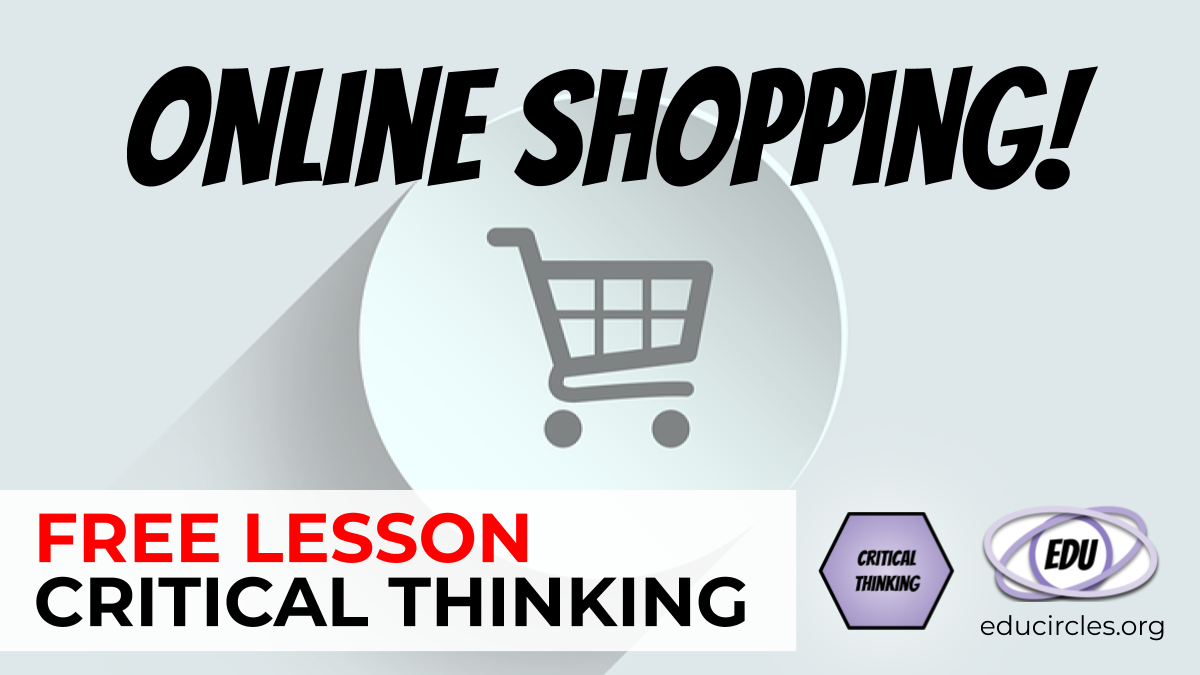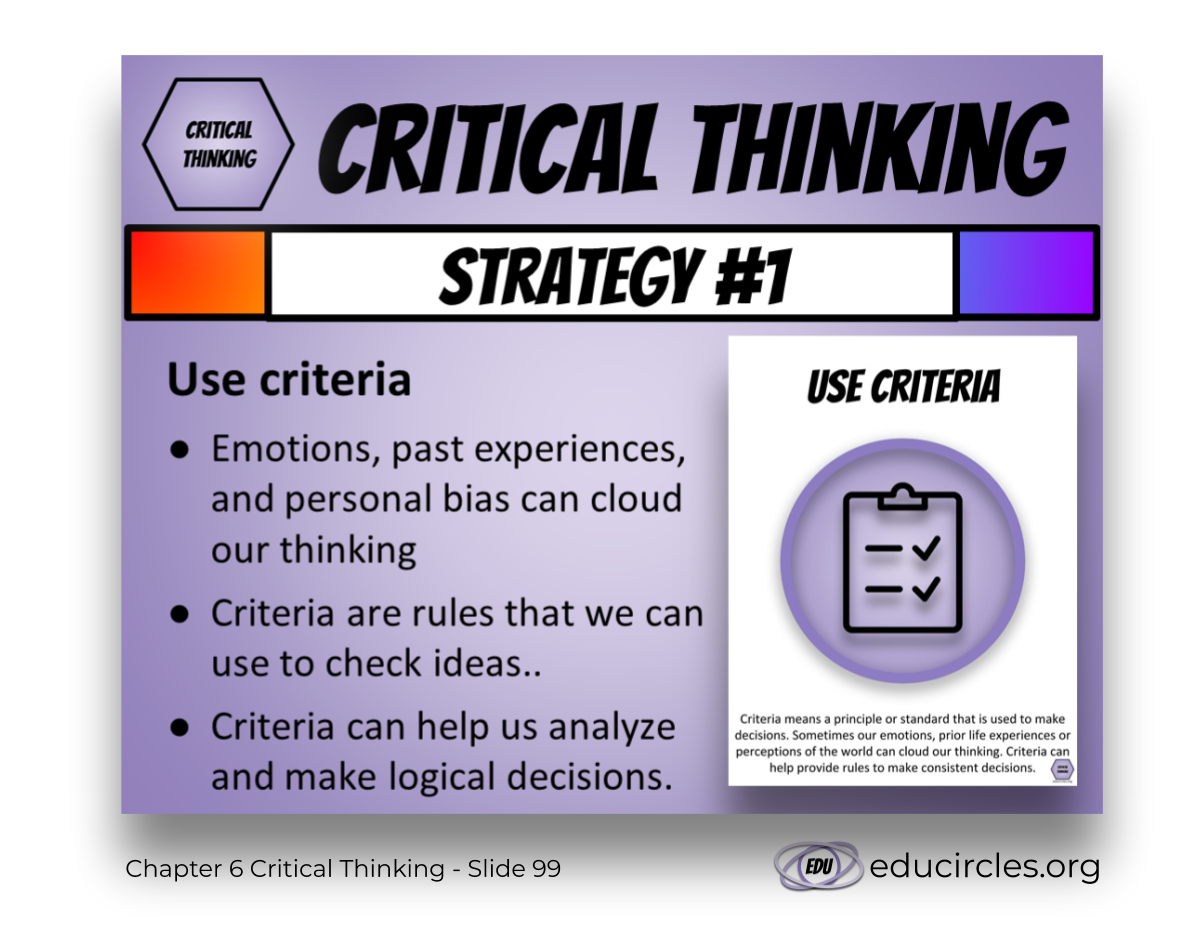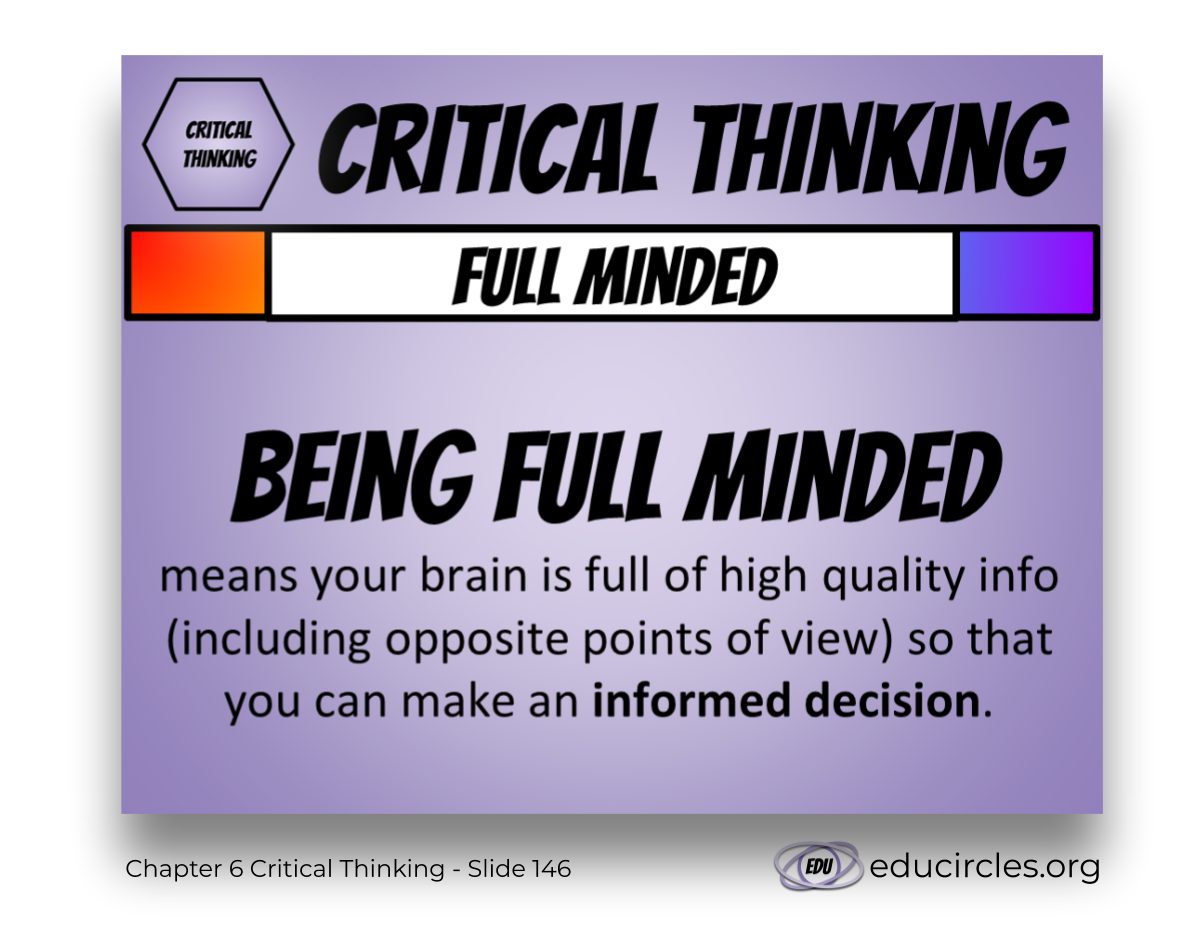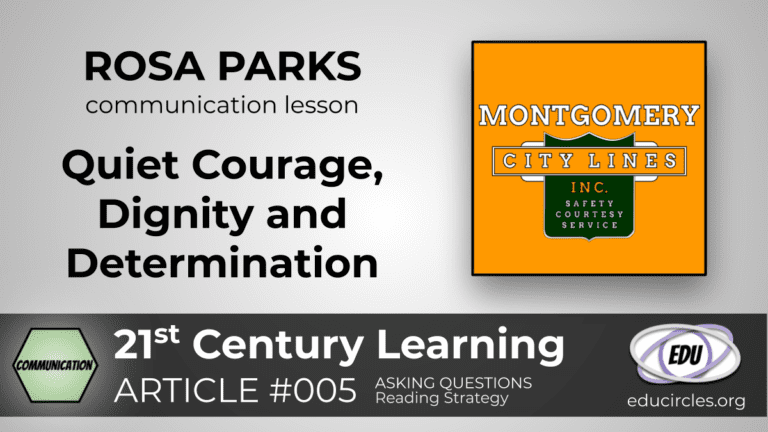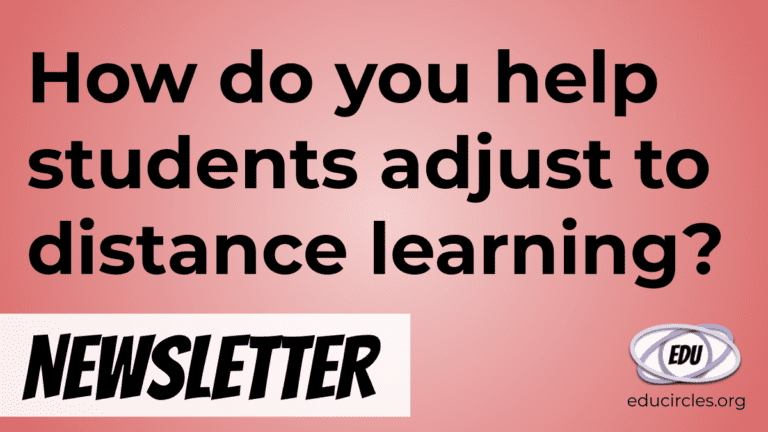Critical Thinking on Online Shopping (FREE LESSON for BLACK FRIDAY)
Happy Black Friday shopping everyone – here’s a free lesson to help students (and teachers!) think more critically when you’re doing some online shopping!
Table of contents
- MINDS ON: Before we begin, think about the following scenarios
- About Black Friday
- How much do people spend on Black Friday?
- Everyone can sell their product on Amazon
- Everyone can buy (and review) a product on Amazon
- What does Amazon do about fake, biased, or bribed reviews?
- Discussion Questions
- What is Critical Thinking
Minds on!
Before we begin, take a moment to answer the following scenarios:
Pro Teaching Tip: You could do each scenario your class as a 4 corner activity.
- Read this scenario to your students and ask the question at the end of the scenario.
- Then, phrase it as a statement and ask if students “strongly agree”, “agree”, “disagree”, “strongly disagree.”
- In your classroom, put a piece of paper with each opinion in the different corners of the room.
- Ask your students to go to the corner that matches their opinion.
- Give students a little bit of time to discuss with other people in their group about why they feel this way.
- Then lead a classroom discussion/debate giving different corners the opportunity to convince other people to switch their side.
Minds-on Scenario 1:
Your friend’s mom (or dad) makes custom T-shirts which they sell online. Their small business is just starting out and it’s hard to get the word out in the city. So, they ask friends and family to leave positive reviews online so they can get more customers. Would you leave a 5-star review on their Google business page to help them out?
Minds-on Scenario 2:
Your friend’s mom (or dad) decide they want to sell their custom T-shirts to people outside of the city. They hear about how small businesses can sell stuff through Amazon. Basically, you list your product in the Amazon marketplace catalogue. Amazon handles all the money stuff for a small fee. Your friend’s family business decides to even store their custom T-shirts at one of Amazon’s storage warehouses so that when someone buys their product, Amazon picks, packs, and ships the order.
You get asked to leave a positive review online to help them out. After all, there’s a lot of competition and they need to get noticed. In order to leave a review, you have to purchase the product first, but don’t worry, they’ll pay you back so you don’t lose any money. Would you leave a five-star review on their Amazon product?
Minds-on Scenario 3:
You are shopping on Amazon and discover the product you really want has a cheaper version available, but it’s essentially exactly the same thing. At first, you’re not sure, but you look at all the reviews on Amazon and there are a lot of five-star reviews with positive comments. Would you buy the original product at full price, or would you buy the cheaper imitation version at a much lower price? (How low? Ridiculously low. This is an incredible deal.)
Minds-on Scenario 4:
You decide to buy the cheaper imitation version (at the much lower price) and when you get it, it’s fantastic. It really is pretty much exactly the same thing as the original product, but just slightly different. Definitely worth the lower price. And then you notice a card in the packaging that says if you leave a five-star review on their Amazon page, they will refund you the price of the product. Would you leave a five-star review on their Amazon page so you could get this product for free?
In this scenario…
- This isn’t a scam. Once you send them a screenshot of your review, they actually send you the full price that you paid.
- You love this product. You think it’s awesome and you were going to leave a five-star review anyway.
Minds-on Scenario 5:
You decide to buy another imitation product by the same company. Pretty much the same thing as the original product, but just slightly different and a much lower price. This time when you get the product, it’s not as good as you thought it would be. Maybe a three-star product in your opinion.
The card in the packaging again says if you leave a five-star review on their Amazon page, they will refund you the price of the product.
Would you leave a five-star review on their Amazon product page so you could get this product for free?
Would you leave a five-star review on their Amazon product page, but in the review, talk about some of the problems with the product but put a really positive spin so that the company will still give you back the money you paid?
About Black Friday
Black Friday used to be a one day shopping bonanza after American Thanksgiving, the fourth day of November. Then, we had Cyber Monday added on to make it a festive 4 day weekend of shopping. Now, a lot of retailers have Black Friday weeks, pre-Black Friday sales, and pretty much we have non-stop shopping from Remembrance Day (Nov 11) to Boxing Day and beyond!
This year, Black Friday is on Friday, November 29, 2019. (And, Cyber Monday is on Monday, December 2, 2019.)
According to the History channel’s website, Black Friday has its roots in the crash of the U.S. gold market back in 1869. But, of course, the more popular version of the story tells us that Black Friday marks the day when stores would become profitable:
As the story goes, after an entire year of operating at a loss (“in the red”) stores would supposedly earn a profit (“went into the black”) on the day after Thanksgiving, because holiday shoppers blew so much money on discounted merchandise. Though it’s true that retail companies used to record losses in red and profits in black when doing their accounting, this version of Black Friday’s origin is the officially sanctioned—but inaccurate—story behind the tradition.
Sarah Pruitt on History.com, What’s the Real History behind Black Friday
How much do people spend on Black Friday?
Last year, Americans spent over $6.2 billion in 24 hours. Crazy, right?
Adobe Analytics measures online sales at over 80 of the top 100 online retailers in the US. They analyze sales data for over 4,500 retail websites and they have a very cool webpage that shows digital insights, predictions, and data for the 2019 Holiday Shopping trends.

The screenshot above was taken from Adobe’s website on Nov 21, 2019. From Nov 1- Nov 17, 2018, people bought $126 billion from US online stores. And this is only online shopping. We’re not counting sales from foot traffic in brick-and-mortar retail stores.
So, yes, the Black Friday shopping weekend is a big deal and online sales are crazy. According to a press release from Adobe last year, the full shopping season (Nov 1 to 26) generated over a billion dollars in sales every day.
Some of the big sales days from 2018:
- Thanksgiving Day (2018): $3.7 billion in online sales
- Black Friday (2018): $6.2 billion…
- Cyber Monday (2018): $7.9 billion…
CNN Money wrote about how Black Friday 2017 was all about the digital sales:
Digital retail giant Amazon (AMZN) said Friday that orders were rolling in “at record levels.” More than 200,000 toys were sold in just the first five hours of the day, the company said. Amazon did not provide sales figures for Black Friday.
Jackie Wattles, CNN Money, Online sales boomed on Black Friday
Even though Amazon didn’t report how much they sold on Black Friday, we know it’s a really big number.
Check out this screenshot of the Fortune 500 list. Amazon is one of the top 5 companies in America in terms of how much they sell (revenue).

Everyone can sell their product on Amazon
Amazon has made it incredibly easy to sell your product on their marketplace.
If you check out the Amazon services webpage, They give you 3 big reasons:
- You can reach hundreds of millions of customers (who trust the shopping process on Amazon)
- Fulfilment by Amazon takes care of storing your products in their warehouses, picking, packing, and shipping your products, and dealing with customer service and returns.
- You can get your product seen by more shoppers by paying for targeted sponsored ads.
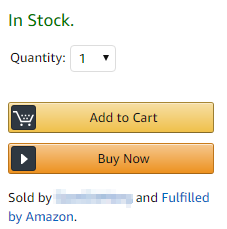
Over half of the products sold on Amazon come from third-party selection. Everyone from small entrepreneurs to big companies can sell their product on Amazon.
It will say, “Sold by [STORE NAME] and Fulfilled by Amazon.
In fact, entrepreneurs around the world sell on Amazon using Amazon services. Amazon has a page of success stories on their website, including Christine Krogue’s story:
Everyone can buy (and review) a product on Amazon.
Chances are, you or someone you know has bought a product on Amazon. There’s a good chance that you bought it on a Black Friday weekend! You might have even left a review about how much you loved or hated the product.
If you purchase a product from Amazon, when you write a review on Amazon, you can add the label, “Amazon Verified Purchase.” According to Amazon, Having the Amazon verified purchase label besides you review helps customers make an informed decision about the product before buying it
Customers reading an “Amazon Verified Purchase” review may use this information to help them to decide which reviews are most helpful for their purchasing decisions…
… The “Amazon Verified Purchase” review label offers an additional way to help gauge the quality and relevance of a product review.
Amazon Help Page, verified purchase reviews
Nicole Nguyen recently wrote an article on BuzzFeed News about a woman who buys things on Amazon with her own money, and then writes five-star reviews of the products so that she can get reimbursed for her purchase by the companies that sell these products.
The reviews are quite extensive, complete with photos and video. Jessica (not her real name) has spent over $15,000 on Amazon this year.
- She finds sellers through Facebook ads or Facebook groups
- She chats with overseas companies using Facebook messenger, WhatsApp or email to negotiate deals and get refunded through PayPal.
- She uses a spreadsheet to keep track of when the item arrives, when she has to review it (usually a few days later), whether she’s submitted a review, what she paid out-of-pocket, and how much she received back from the seller.
…Jessica told BuzzFeed News she doesn’t think she’s gaming the system; she’s trying to help brands grow their businesses in Amazon’s massive marketplace. “I’m just a pawn in their marketing scheme,” she said.
Nicole Nguyen on BuzzFeed News, Her Amazon purchases are real. The reviews are fake.
The list of the 700+ products she has purchased online is extensive: vacuum cleaners, chairs, inflatable mattresses, 26 pairs of earbuds, salad spinners, foot spas, kids toys, new shower head, side tables, coat rack, coat hangers…
What does she do with all of the free stuff?
- some of her house furnishings came from these five-star reviews
- she gives away many of the items to friends and family
- she’s donated clothes that don’t fit
- She’s made around $150 selling on Facebook marketplace
At the time of the article, Jessica was waiting to get refunds on 117 orders and was out of pocket for over $2,000. She gets a lot of free stuff, but estimates that she’s probably losing money in the end– maybe a 10% loss.
Through reviewing herself, Jessica now knows that many Amazon reviews are inauthentic. Despite that, she pays for a $119 annual Prime membership and uses the site for personal purchases, separate from her fake reviews. But she doesn’t consider reviews while browsing: “When I see an off-brand product that’s Amazon’s Choice, [that label] doesn’t mean anything to me anymore,” she said.
What does Amazon do about fake, biased, or bribed reviews?
Amazon has a list of things they do not allow in customer reviews. For example, the seller isn’t allowed to post a review of their own product, or post negative reviews about a competitor’s product.
Here are some other policies that apply to this situation.
Examples of reviews that we don’t allow include:
… A customer posts a review in exchange for cash, a free or discounted product, a gift certificate, or a discount on a future purchase provided by a third party.
… A relative, close friend, business associate, or employee of the product creator posts a review to help boost sales.
… A customer posts a review of the product after being promised a refund in exchange for the review.
Amazon Help Page, Promotional Content
Looking around the internet, it looks like Amazon has released similar statements to reporters.
Here’s what Amazon said they were doing about fraud reviews, as reported by The Observer…
Amazon told the Observer it was “relentless” in its efforts to protect the integrity of reviews and had spent $400m in the last year to crack down on fraudulent posts. “We use a combination of automated technology and teams of trained human investigators who analyse multiple data points to determine authenticity,” it said. “Last year, we took action against more than five million bad accounts attempting to manipulate reviews.”
Anna Tims, The Observer, Nov 10, 2019
… and BuzzFeed…
In a statement, an Amazon spokesperson said, “Any attempt to manipulate customer reviews is strictly prohibited.” In 2018, Amazon spent over $400 million fighting misconduct, like review abuse and fraud, and asked social media sites like Facebook to remove hundreds of incentivized review groups, according to the spokesperson. “We suspend, ban, and take legal action on those who violate our policies,” they added.
Nicole Nguyen, BuzzFeed, Oct 14, 2019
… and BuzzFeed again a month later:
BuzzFeed News sent Amazon a detailed list of questions about how it polices inauthentic reviews. A company spokesperson responded with the same statement it provided for our Oct. 14 report on Amazon sellers using Facebook chatbots to cheat its review system. The statement noted that the site had prevented more than 13 million attempts to post inauthentic reviews, and that it “took action” against more than 5 million sellers’ accounts for review manipulation.
Nicole Nguyen, BuzzFeed, Nov 20, 2019
It looks like Amazon:
- has prevented more than 13 million attempts to post inauthentic reviews
- took action against more than 5 million (bad) sellers’ accounts for review manipulation
- suspend, ban, and take legal action on those who violate our policies
- spent over $400 million (in 2018) fighting review abuse and fraud
- asked social media sites (i.e. Facebook) to remove hundreds of incentivized review groups
- use a combination of automated technology and teams of trained human investigators who analyse multiple data points to determine authenticity
Discussion Questions
- What is the problem in this article? Who wins? Who loses?
- Who are the different stakeholders / people / perspectives involved in this article? What might their points of view be?
- Whose perspectives are missing from this article? What might their points of view be?
- Do we really need to think more critically when we shop online?
- What are some strategies that that we could use to trick people into buying our stuff on Amazon? Would those strategies actually work?
- What are some strategies that we could use to keep ourselves from being tricked into buying things we don’t want? Would those strategies actually work?
- Should Amazon be doing more to shut down fake reviews? Why or why not?
- Should Jessica stop writing fake reviews? Why or why not?
- Should companies stop reimbursing people to write positive 5-star reviews? Why or why not?
- Should reporters by writing articles about fake reviews on Amazon?
- Whose responsibility is it to solve this problem?
What is Critical Thinking?
Critical thinking is when we make decisions or form opinions based on high-quality information. This means we have to seek out opposing points of view to make an informed decision.
In our unit about critical thinking we talk about some strategies to help students think more critically. As you work your way through the discussion questions, try to:
- use criteria to help you make a decision.
- be full minded and look at all sides of the issue
Use Criteria means coming up with a principle, definition or rule to base your decision on
For example, if we’re thinking about whether Jessica should stop writing fake reviews, your first instinct might be to say yes because she’s helping companies trick other people into buying poor quality stuff. Okay, but what’s wrong with that?
You might say that it’s wrong because she’s scamming people. So, what’s the criteria or definition of a scam? What does it mean to scam something? Based on this criteria, are other people actually getting scammed? Is Amazon getting scammed? Are other companies getting scammed?
Is this her fault? What does fault mean?
Being full minded means you have to look at both sides of the story
You have to actively look for opposite points of view. For example, if we’re thinking about whether Amazon should be doing more to stop fake reviews, you might ask yourself:
Why might Amazon do more to stop fake reviews?
Why might Amazon do less to stop fake reviews?
How might Amazon benefit if there are fake reviews?
How might Amazon be at a disadvantage if there fake reviews?
